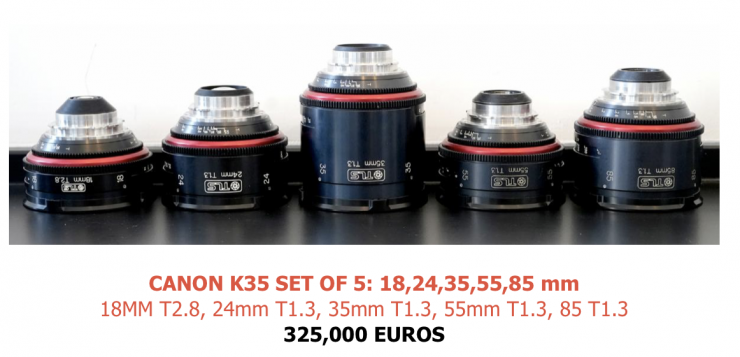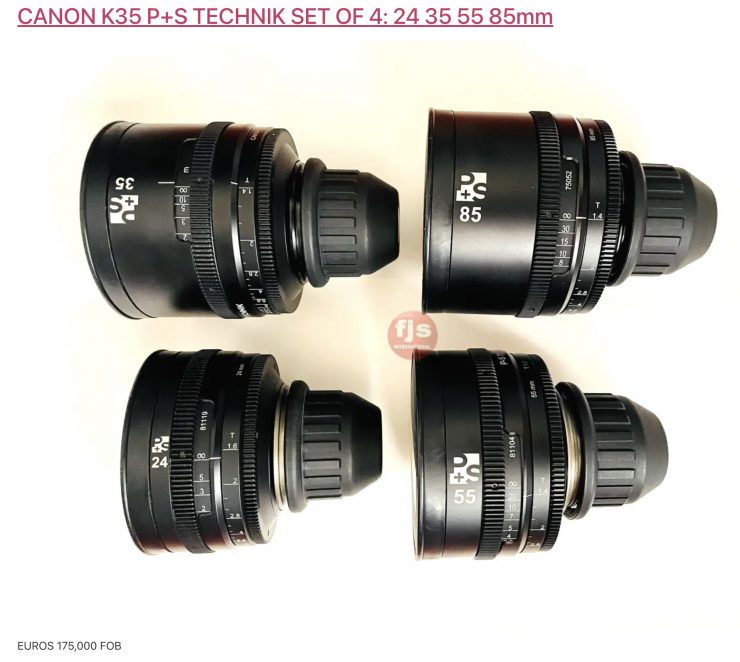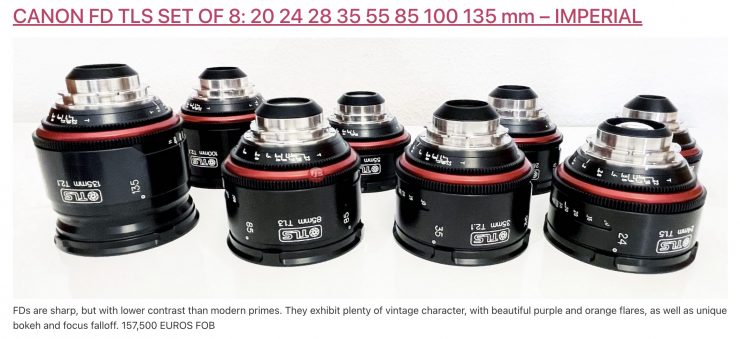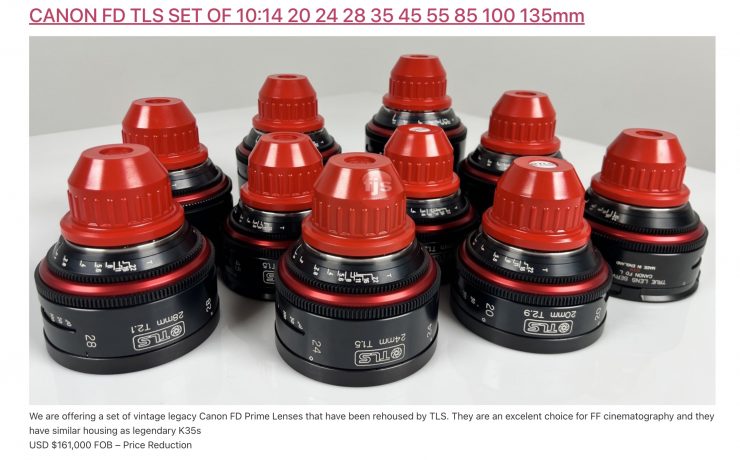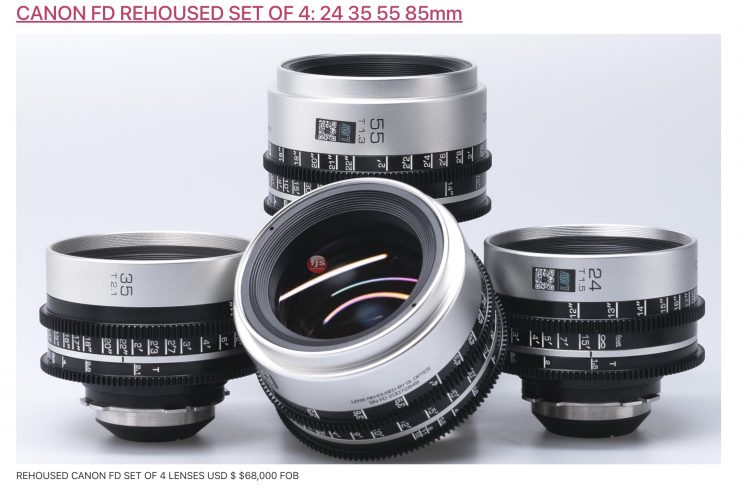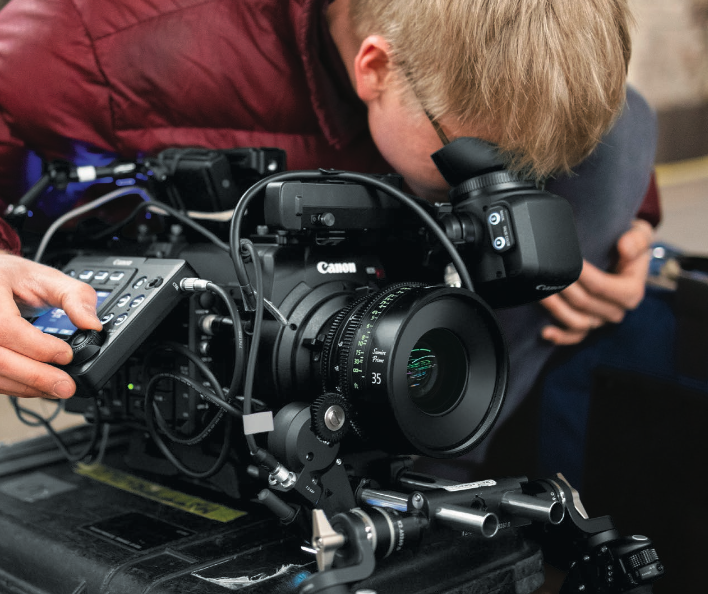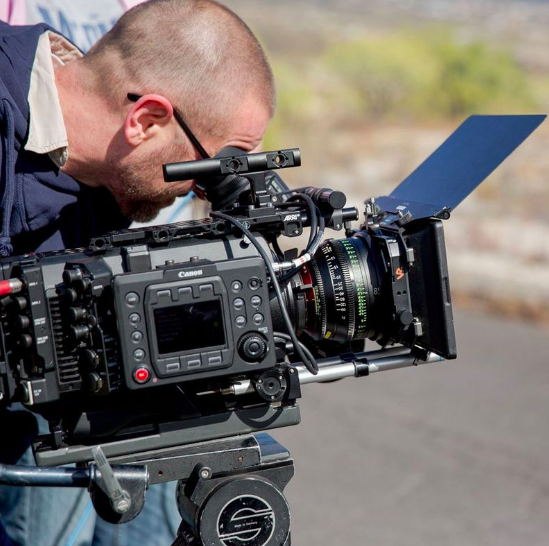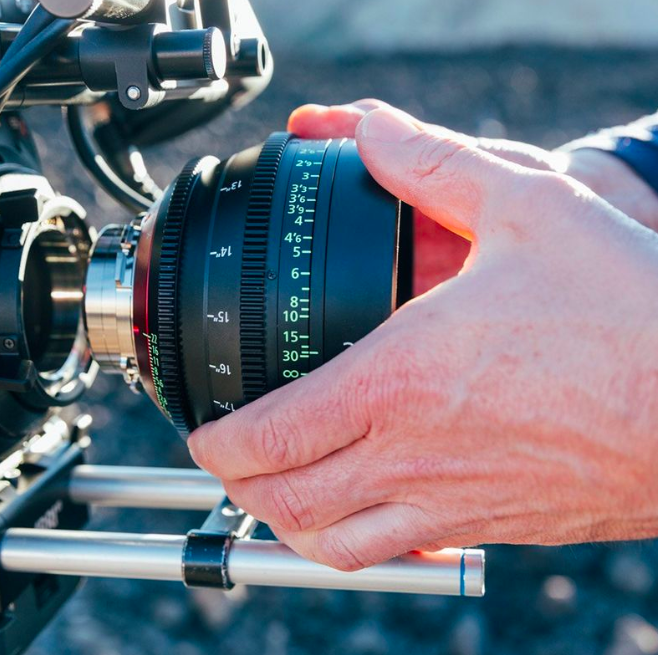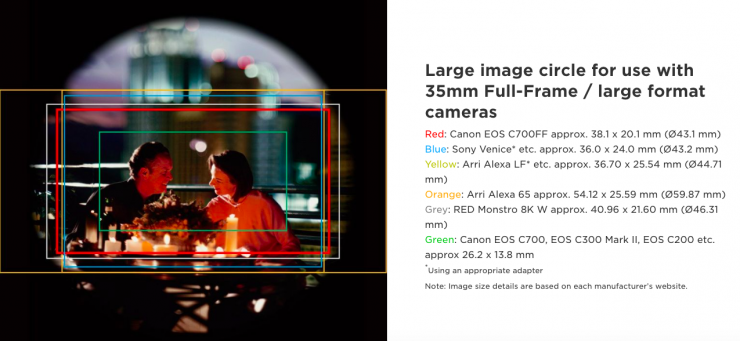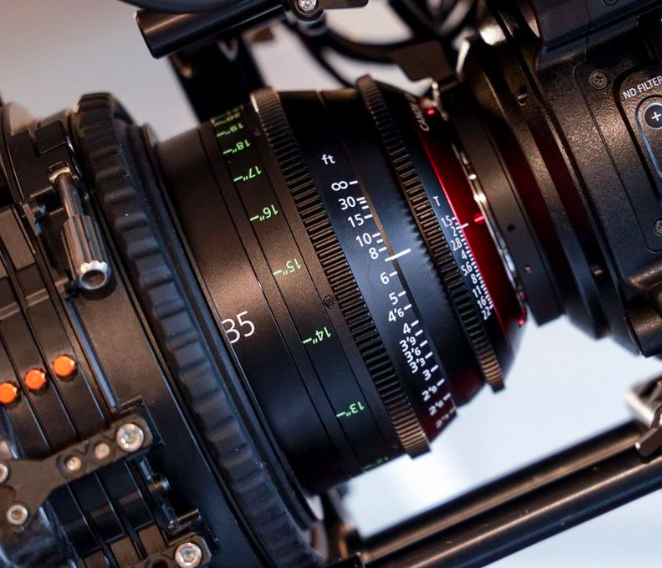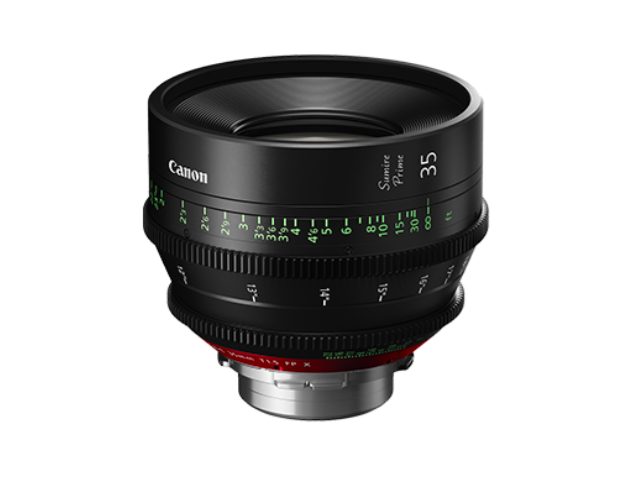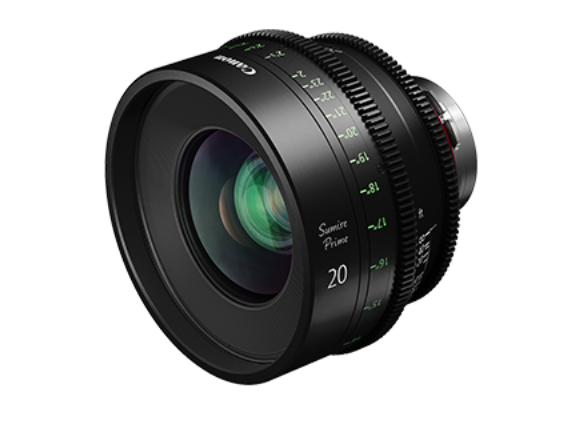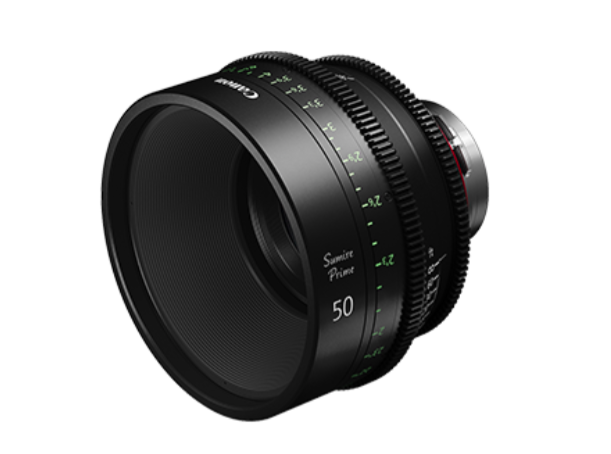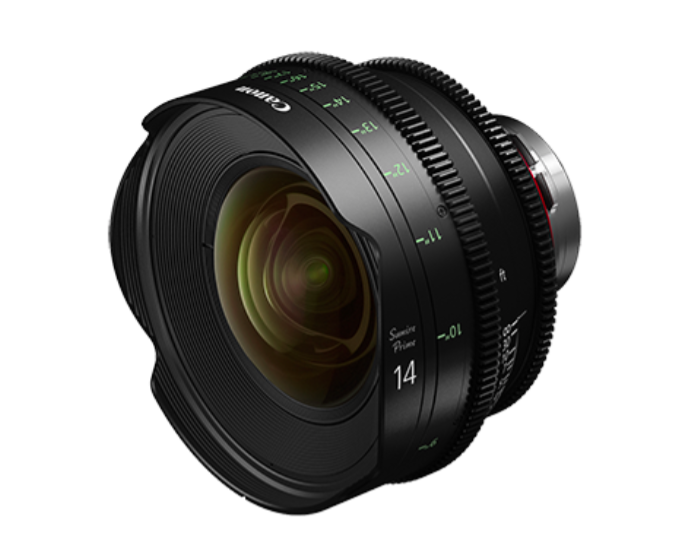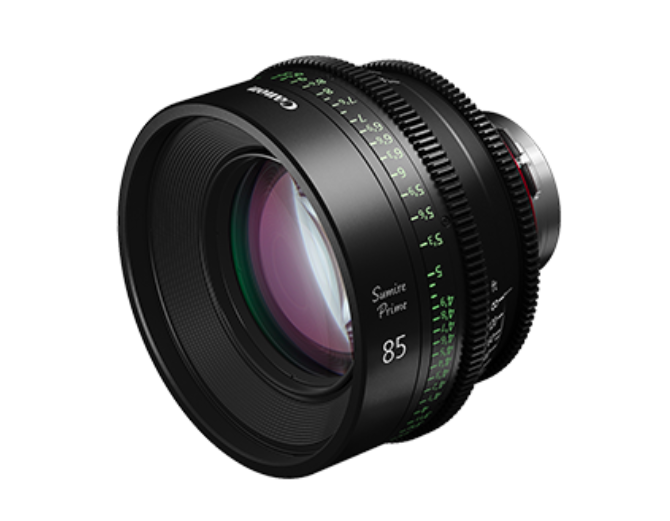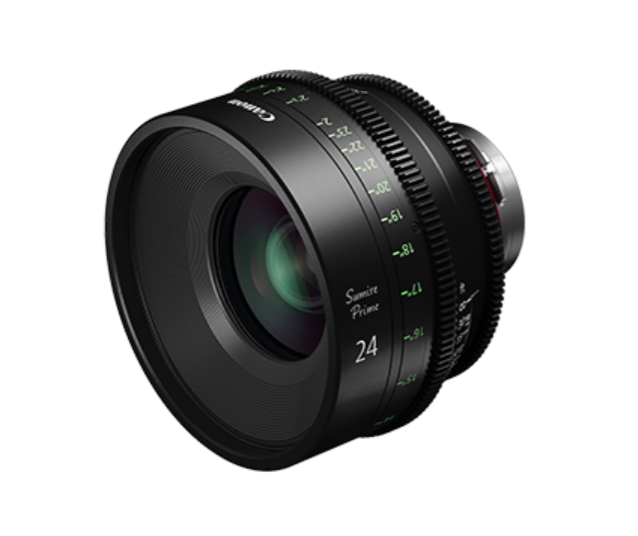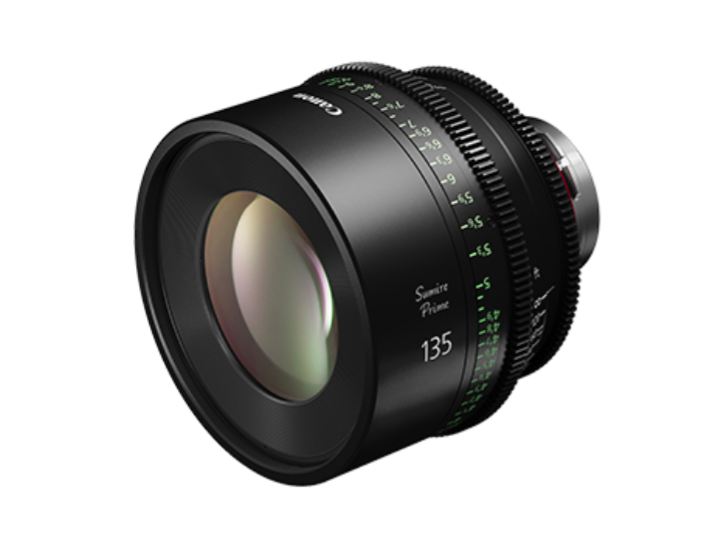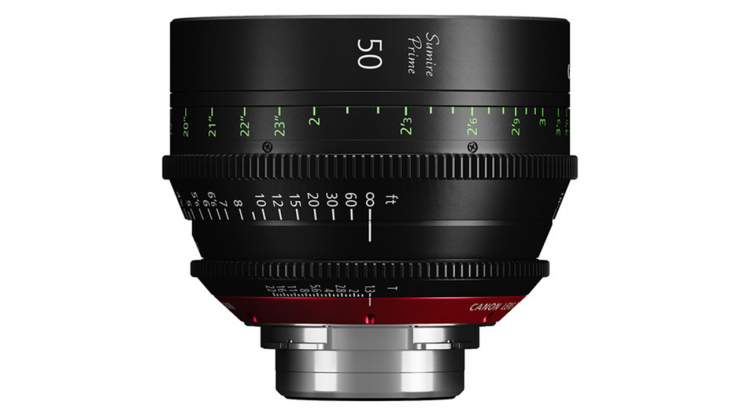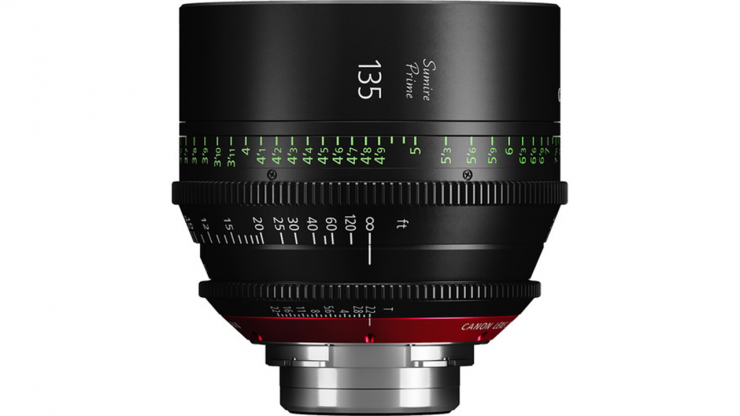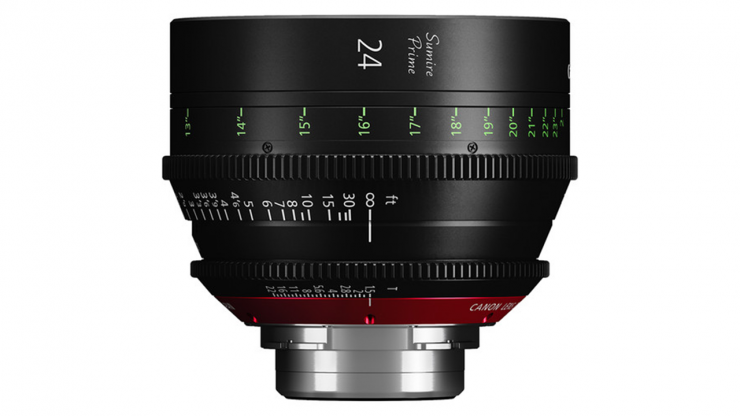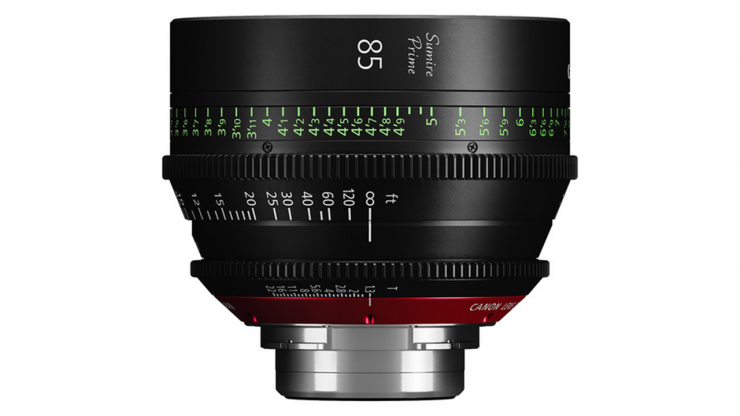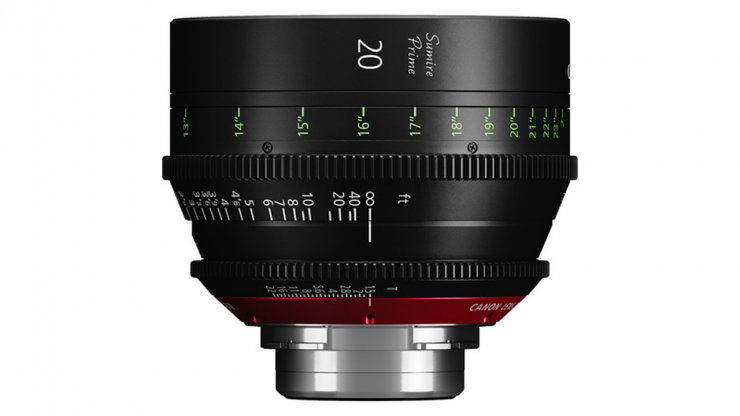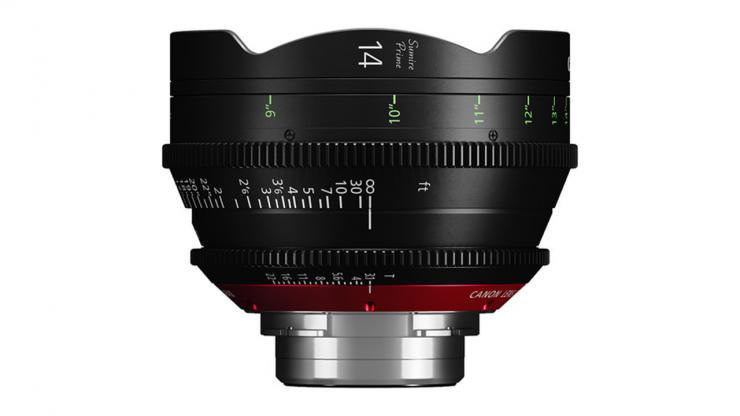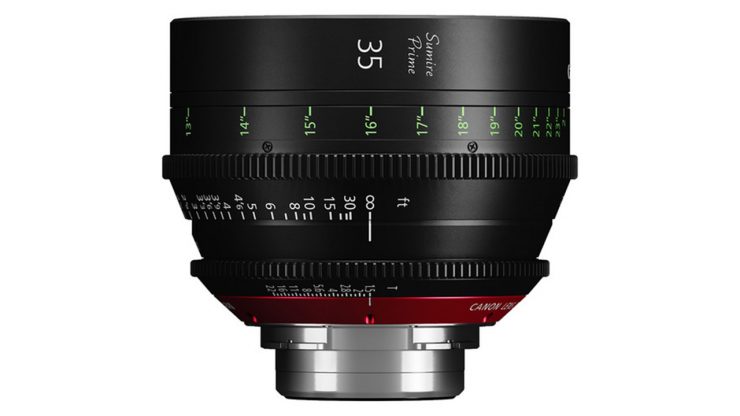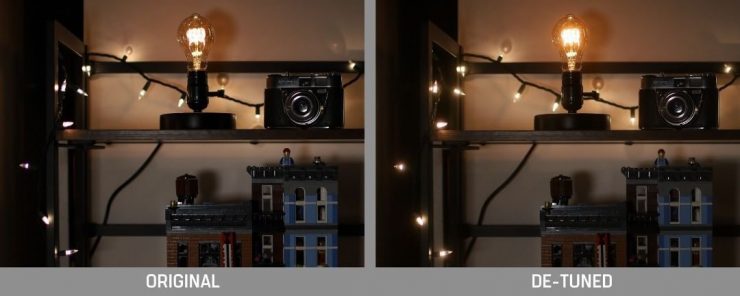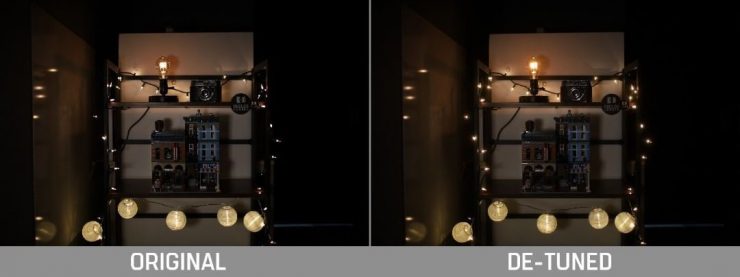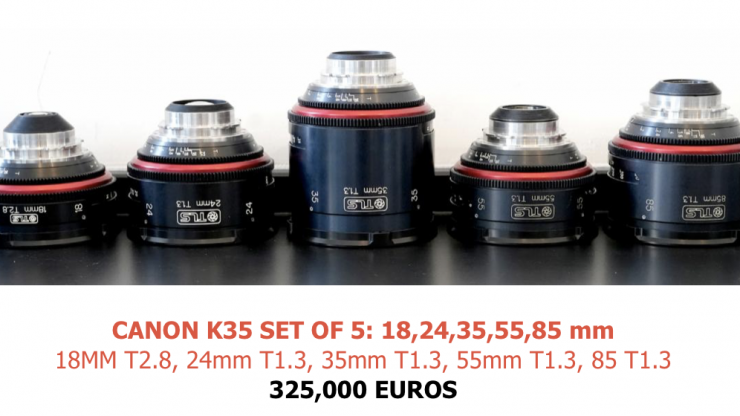
The price of vintage cine lenses continues to rise and shows no signs of slowing down. The prices for certain sets of lenses have gotten to the point where they are now worth many times more than they were when they were new, even when calculating in inflation.
Yes, high demand and low numbers mean high prices. The more in demand something this the more someone can charge for it.
I mean, look at this listing above. I thought this must have been a typo when I first saw it, but it came in an email from FJS International this morning. This works out to be 65,000 Euros per lens. Yes, that is a pretty extreme example, but even other sets are still very expensive.
To put that price in perspective a 6-lens set of ARRI Signature Primes costs $152,670 USD.

Someone on eBay is actually selling a Canon K35 18mm lens housing without any optics!
The iconic Canon K-35 lenses were manufactured during the 1970s and ’80s. These lenses were used in films such as “Aliens”(1986) and “American Hustle” (2013). The optical design of the K-35 series is a perfect example of Canon’s optical expertise and fine lens design. The K-35 lens is slightly softer and has less contrast compared to modern lenses. But is sharper and provides more contrast than other vintage lenses.
Today the lenses are more sought after than ever and finding a complete set will cost you a pretty penny. However, their stills cousins, the FD series are a lot more affordable options if you want to create a look that is similar to the K-35s. In saying that, the prices of Canon FD lenses have also gotten out of control.
Above you can see some prices for rehoused Canon FD lenses.
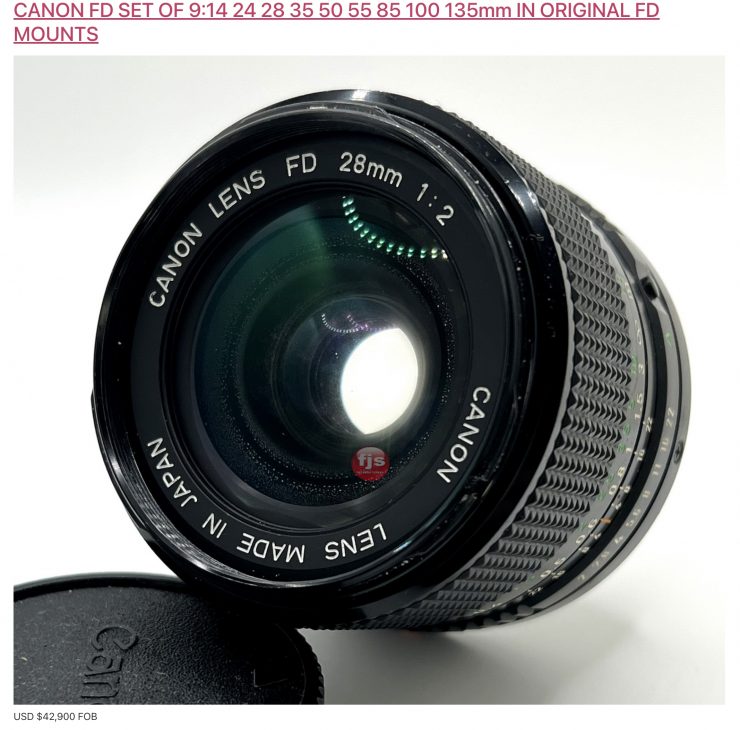
Even pretty banged-up non-cine-housed original Canon FD lenses will set you back a lot of cash.
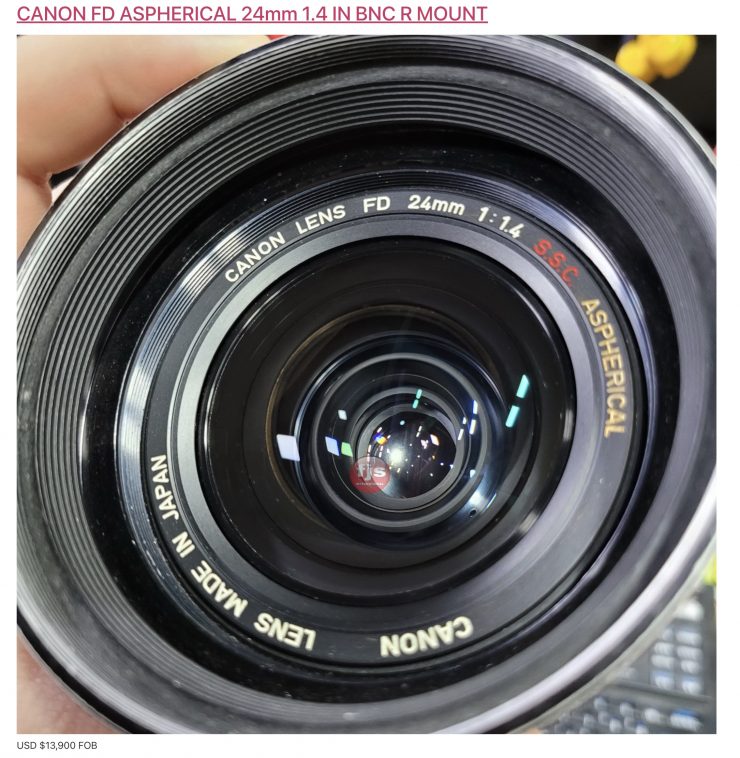
Above is a single Canon FD 24mm F1.4 listed for $13,900 USD.
You can’t just make new versions of some of these older lenses because the glass and coatings that were used no longer exist today. We have seen quite a few attempts at companies trying to recreate the look of Canon K35s and FDs, but that is virtually impossible to do.
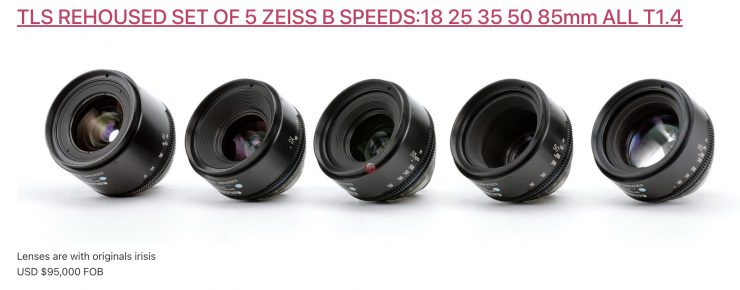
It is not just the Canon FD and K35s that are expensive. Even lenses like the Zeiss Superspeeds are still increasing in value.
The biggest issue facing rental houses is when it comes to insurance. If you have sets of lenses that simply can’t be replaced, then getting insurance is very difficult. If you do happen to get insurance then the insurance company may very well place strict conditions on what type of environments the lenses can be used in. If for example, you wanted to use a set of Canon K35s near water or on a vehicle mount, etc. the insurance company may not provide coverage or void your coverage if you do so.
So let’s have a look at some of the modern-day options that try to replicate the look.
Canon Sumire Prime Series
Back in 2019, Canon announced the Sumire Prime Series, a range of seven fast T-stop cinema prime lenses, all with an interchangeable PL mount, which can be modified to an EF mount.
The lenses are:
- CN-E 14mm T3.1 FP X
- CN-E 20mm T1.5 FP X
- CN-E 24mm T1.5 FP X
- CN-E 35mm T1.5 FP X
- CN-E 50mm T1.3 FP X
- CN-E 85mm T1.3 FP X
- CN-E 135mm T2.2 FP X
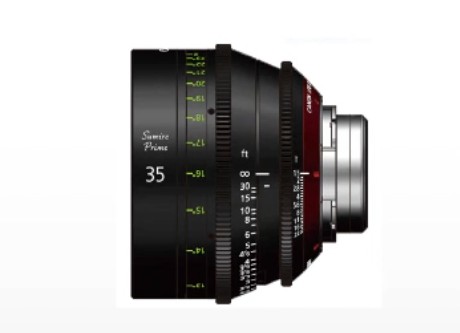
CN-E 35mm T1.5 FP X 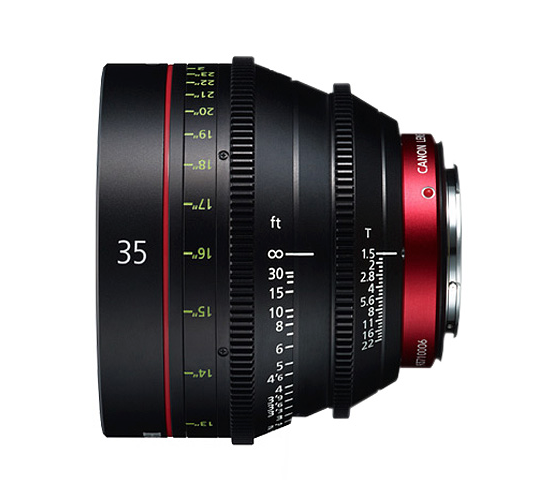
Canon CN-E 35mm T1.5 L F Cinema Prime Lens (EF Mount)
At first glance, the Sumire (pronounced ‘Soo-mee-ray’, is Japanese for violet – the flower not the color) Primes look almost exactly the same as the existing CN-E Prime lenses. They have the same focal lengths, same T-stops and are almost identical in size and weight.
So what’s different?
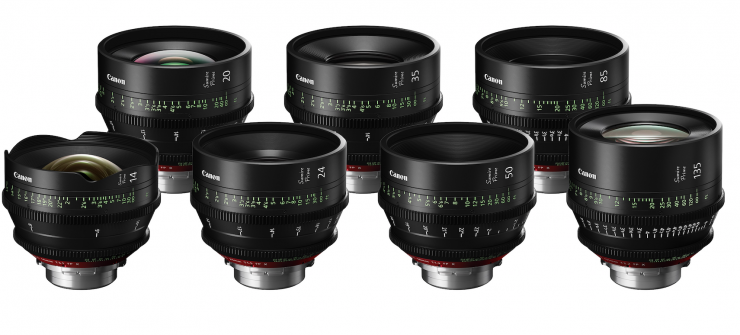
According to Canon, the full-frame Sumire Prime lenses feature a completely new optical design. They have been designed to have a “softer” look that allows them to create a more organic-looking image.
I’m not quite sure just how much the optical design differs from the CN-E Primes. At the time they were announced, I asked Canon if these lenses were just CN-E primes with different lens coatings, and I was told no.
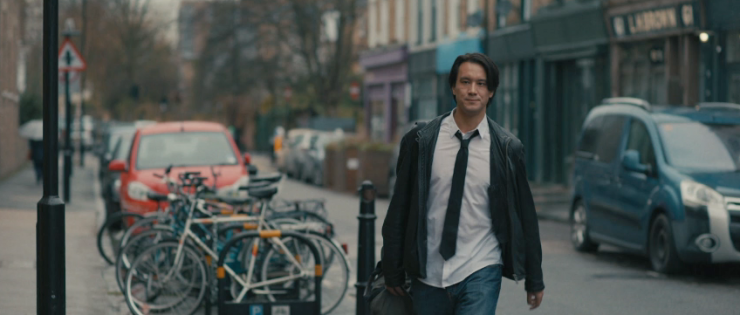
Canon claims that the Sumire subtly modify the textural renderings of the human face, and have a smooth fall-off to out of focus areas.
The lenses feature a large diameter aspheric element and anomalous dispersion glass, that Canon says “Offers a delicate, velvety nuance when the aperture approaches its maximum setting during shooting. This unique optical design results in solid and natural image rendering, bringing impressive image quality and warmer tones to cinema productions.”
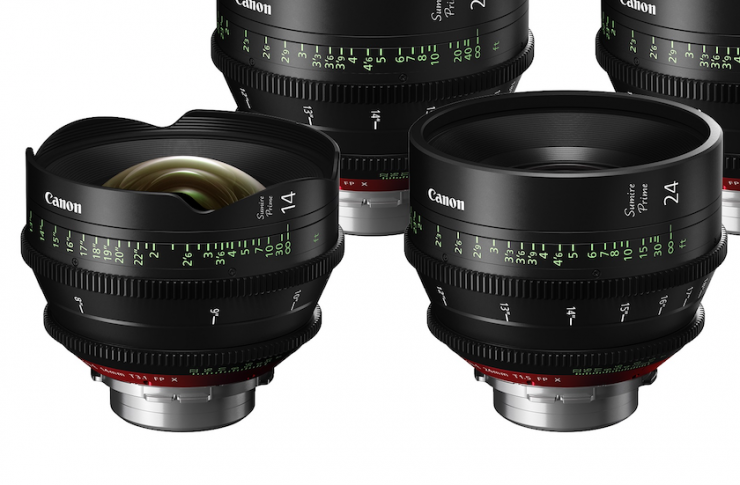
All 7 lenses have an 11-blade iris which Canon says “Provides cinematographers with richer levels of rounded bokeh for better impression of subjects and softer rays of light – perfect for creating intimate shots that direct the viewer’s attention to specific details.”
The Sumire lenses are claimed to have the same uniform color balance as CN-E primes.
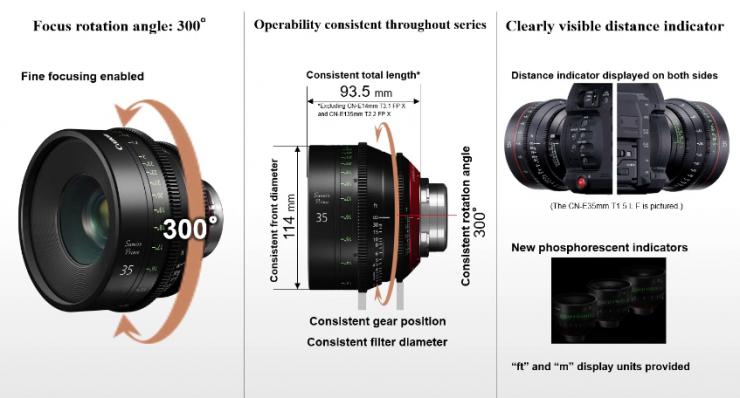
Just like the CN-E primes, the Sumire Primes all share the same 114mm front barrel diameter, 300° focus rotation, 36° iris rotation, and focus and iris gear positions.
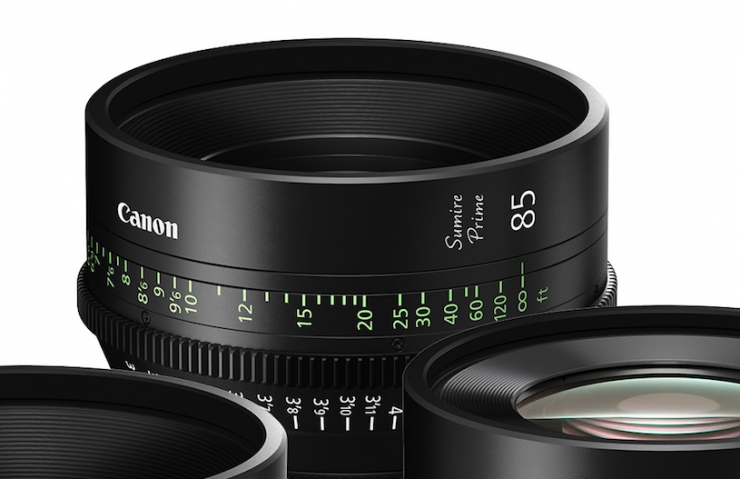
The Sumire primes also feature phospherescent indicators so you can see the marking in the dark.
Are they a modern day K-35?
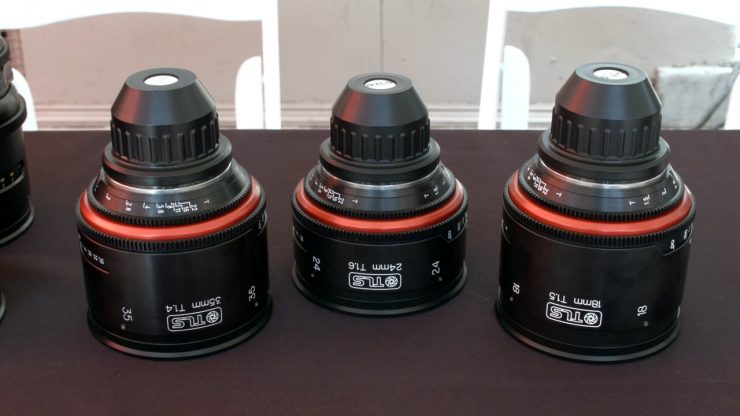
One of the first questions I asked Canon was “Are these a
We are seeing a lot of lens manufacturers now coming out with modern-day optics that have been designed to try to take the harsh edge off digital cinema cameras. It’s interesting to see that as resolutions have gone up, more and more cinematographers are looking for lenses that have a softer, more organic look.
I’m not quite sure why Canon decided to give the new lenses a name that no one is going to be able to pronounce correctly. From a marketing perspective, I personally think it would have made more sense to call them something like K-35X.
You can swap the mount between PL and EF
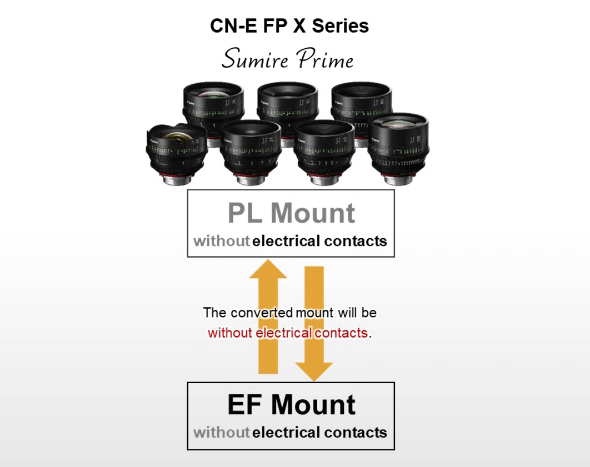
The PL mount on the Sumire lenses can be changed to EF mount. Now,
It’s important to note that if you do swap them over to EF, those EF mounts do not have any electrical contacts.
The Sumire lenses were a direct response to feedback Canon received from cinematographers. I’m sure they also got numerous complaints that the CN-E lenses didn’t come in PL mount.
In my opinion, it made absolutely no logical sense whatsoever to make a range of Cinema Prime Lenses that could only be used on cameras that used a Canon EF mount. Effectively Canon alienated an entire sector of the market because cinematographers couldn’t use the lenses on a wide array of cameras.
I think the biggest problem for Canon is still the lack of focal lengths. Most DP’s working on episodic TV, commercials and feature films would probably like to see an 18mm, 21mm, 27mm, 40mm, and 65mm focal lengths added to the existing 14mm, 24mm, 35mm, 50mm, 85mm, 100mm, and 135mm.
This lack of focal lengths is why some DPs prefer to go with cine primes from say, Cooke or ARRI.
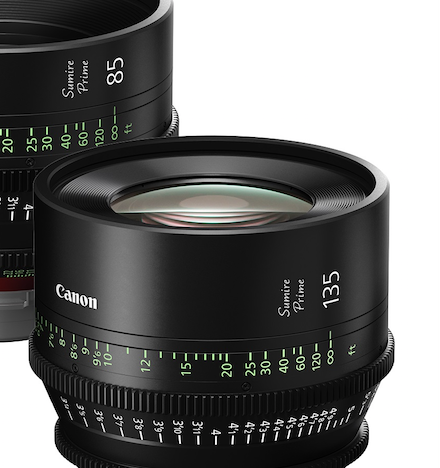
The Canon Sumire Primes cost $7,410 USD per lens.
This is almost double the cost of the CN-E Primes. The CN-E primes cost between $3,950 USD and $4,220 USD each.
| CN-E 14mm T3.1 FP X | CN-E 20mm T1.5 FP X | CN-E 24mm T1.5 FP X | CN-E 35mm T1.5 FP X | CN-E 50mm T1.3 FP X | CN-E 85mm T1.3 FP X | CN-E 135mm T2.2 FP X | |
| Mount | PL | PL | PL | PL | PL | PL | PL |
| Focal Length | 14mm | 20mm | 24mm | 35mm | 50mm | 85mm | 135mm |
| Maximum diameter ratio (T-stop) | T3.1 | T1.5 | T1.5 | T1.5 | T1.3 | T1.3 | T2.2 |
| Number of Iris Blades | 11 | 11 | 11 | 11 | 11 | 11 | 11 |
| Minimum shooting distance | 0.20m/8″ | 0.3m/12″ | 0.3m/12″ | 0.3m/12″ | 0.45m/18″ | 0.95m/32″ | 1.0m/3.3′ |
| Front diameter | 114mm | 114mm | 114mm | 114mm | 114mm | 114mm | 114mm |
| Weight | approx. 1.2kg | approx. 1.2kg | approx. 1.2kg | approx. 1.1kg | approx. 1.1kg | approx. 1.3kg | approx. 1.4kg |
Northwest Camera Co & Duclos Lenses Canon CN-E Primes K35 Conversion
Northwest Camera Co. and Duclos Lenses offer a retune for Canon CN-E Primes that is claimed to make them more closely resemble the classic Canon K35 primes.
The goal was simple, to create a look that mimics the K35’s but was still different enough to interest cinematographers. The ‘look’ required the lenses to have wide-open halation, lower contrast, lower saturation, and more interesting flares. The lenses all keep their original same T stops as well.
The recipe for the look is semi-secret, but what I can tell you is that it is a mix of respacing elements and recoating a number of internal elements. The front and rear of the lenses are untouched, which is great in case of accidents. This makes it very easy for a technician to replace just the front or rear without extra work or downtime.
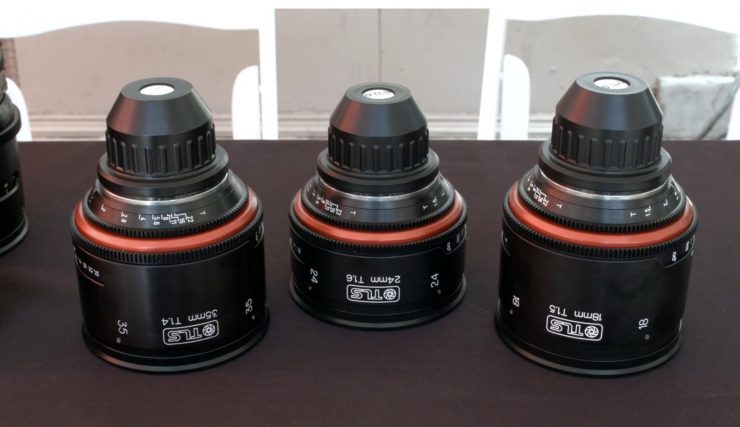
Northwest Camera Co. and Duclos Lenses undertook this project because they felt like it was a great way for rental houses to supplement their K35 sets with a cheaper alternative or give current owners of CN-E sets a new lease on life for their lenses. A lot of rental houses already stock re-housed K-35 lenses that feature modern mechanics.
The biggest upside to these new retuned CN-E primes is that they are much cheaper to own than a K35. They can also be easily serviced or repaired with readily available parts from Canon. Also, since they are modern-day lenses where the base lens comes directly from Canon, there will be much better color matching than what you get with most K35/FD sets. You shouldn’t also overlook that these re-tuned lenses will use Canon’s original housings which are fairly robust with great mechanics and mild weather sealing.
I think here is where the difference lies between the Sumire primes and the re-tuned Northwest Camera Co & Duclos Lenses options. The re-tuned lenses are more closely trying to replicate the K-35’s, while the Sumire’s are not.
When I reached out to Northwest camera Co. to ask them how their re-tuned lenses differed from canon’s Sumire. They told me:
‘So, Canon’s Sumire lenses are still based on the CN-E set, and the only real difference happens when you use the lenses wide open, however, this ‘look’ quickly goes away as soon as you stop the lens down to T2.0. This makes it hard to mix and match stops and keep a consistent look. Our re-tuned CN-E primes feature a much bigger optical development than the Sumire.’
How much do they cost?
Northwest Camera Co. & Duclos Lenses offer two different types of conversion. One with a PL conversion (without data) and another that keeps the standard EF mount.
The conversion to PL will be $3650 USD per lens or $2000 USD per lens if you want to stick with EF. I imagine the price if you already own a CN-E prime with a Duclos PL mount modification will also be $2,000 USD.
The CANON V35 UPGRADE – 7 LENS SET IN PL costs $25,750 USD. This upgrade is limited to 150 sets. The price includes shipping.
The CANON V35 UPGRADE – 7 LENS SET IN EF costs $14,500 USD. This upgrade is limited to 150 sets. The price includes shipping.
The first sets of lenses will start shipping in December 2021. Sets will take around 3-5 weeks for the conversion to be done. You can order this upgrade through Northwest Camera Co. and the lenses would be shipped to them, and then shipped back to customers from Duclos.
Just to be crystal clear, those prices are the prices per lens for having the conversion done, they don’t include a CN-E prime. You have to supply your own CN-E primes or you can also buy or finance the regular set through Duclos Lenses and then pay Northwest Camera Co. to do the upgrade.
As far as your warranty is concerned, this retune will most likely void any current warranty, but for a lot of potential customers, their sets are way out of warranty anyway. Duclos and Northwest Camera Co. will be offering a 1-year warranty after purchase for any manufacturer defects related to the build.

